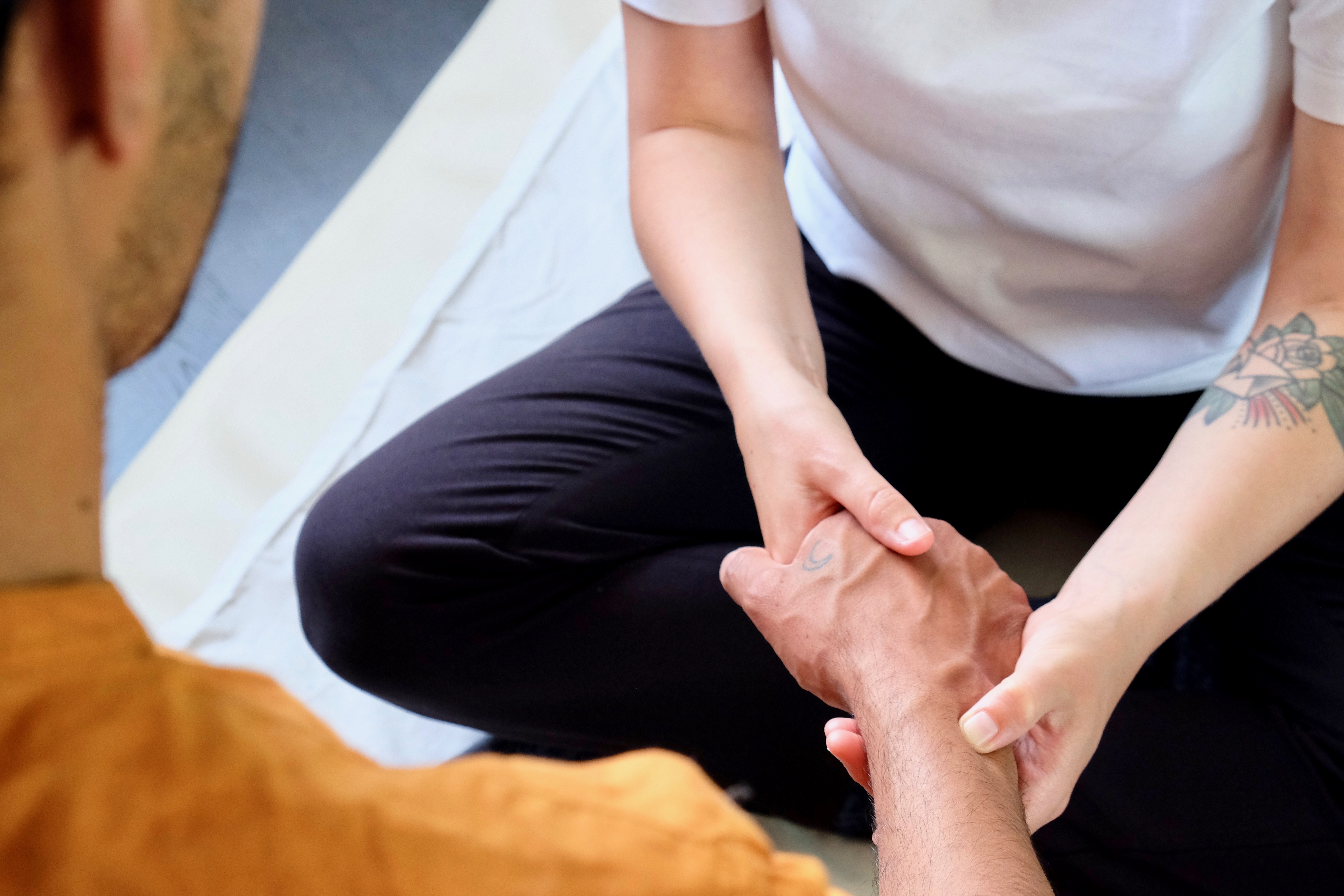Post-traumatic stress disorder and chronic stress are not just something that affects our mental and emotional health. But it can also find its way into our physical body leading to pain and tension and changes our internal system, from our sleep to our digestion.
I’ve had a wonderful opportunity in my career working with government and private programs support victims and survivors of crime. These programs understand the importance of treating the mental/emotional side of trauma and stress through talk therapy sessions and the importance of meeting and treating the body due to the physical and physiological impacts of traumatic stress.

Why would you choose Acupuncture and East Asian Medicine modalities for PTSD and embodied trauma?
- Individualised hour-long sessions.
How you experience embodied trauma is unique and your experience should be individualised. The main aim for our sessions is to understand how the stress or trauma is embodied for you and this experience looks different for everyone a sometimes takes a bit of extra time and attention.
You might experience a lot of physical pain symptoms, from musculoskeletal pain to internal abdominal pain. You might experience a lot of physiological symptoms from digestive changes and heart palpitations or skin rashes and inflammatory conditions. The psychological elements to your trauma symptoms may affect your sleep or lead to chronic skin-picking.
All of these symptoms might need a different approach in our session and a different approach outside of our session. Just like the need to see your GP, talk therapist and any modern medicine specialists or allied health practitioners, the modalities in session perform different roles.
2. There are patterns to the symptoms you’re experiencing
All of these changes to the body might seem random and out of character. But this can be due to the ways in which our brain is sending signals to our organs which release different hormonal messages to combat treat and keep us in a survival mode that may or may not be necessary anymore. (For more information on this topic you might like to explore poly-vagal theory)
When using Chinese Medicine as a form of diagnosis we look for patterns that seem random to you but aren’t for us as practitioners. For example, what do jumpiness, headache/migraines, dizziness, nausea, temperature dysregulation, problems with urinating and fullness in your chest have in common? Well, they are all part of one pattern we observe in Chinese Medicine. This pattern has an herbal medicine that can be prescribed and a series of acupuncture points that can be chosen.
3. What approach should you take?
We need to collaborate on ways in which support can be provided, this might be through mindfulness and body-based techniques, it might be through touch and bodywork, or maybe Acupuncture and Chinese Herbal Medicine.
In your sessions the main aim might be to calm your central nervous system response, this might be done using acupuncture if it feels helpful, or you might choose to do this through bodywork or mindfulness techniques.
But you might have pain for the stress that leads to you holding a lot of tension in your muscles, so we might apply glass cups on your area of pain or use guasha or massage to assist in relieving these aches.
4. Why do we need to collaborate when I’m the practitioner and should know what to do?
As your body and your experiences are so unique, not one size fits all. Maybe do you don’t like needles and want to avoid acupuncture? Maybe you had something happen to your hands and want to avoid them being touched at all costs? We need to be adaptive and dynamic in the session, make the space safe for you to explore techniques that may be helpful for your health care needs.
5. How many sessions do you need and should you be linked with a talk therapist?
Based on observations through clinical practice at the Western Region Centre Against Sexual Assault (WestCASA) we work through a 16 week program, where participants explore 8 sessions of body-based therapies like shiatsu on a fortnightly basis.
Based on that evaluation I can recommend 8 sessions fortnightly as a minimum and that talk therapy and body-based therapies are combined to support and complement each other.
Your talk therapist is there to support you with anything that gets brought up through body-based therapy session, and observations you make about your body response as your discuss the past or difficult emotions with your therapist, can be explored or treated in your body-based therapy session.
Make a booking? Jump to the booking page to organise your first session.
Want to know more before you book, please jump to the contact page and call or email me with any questions.